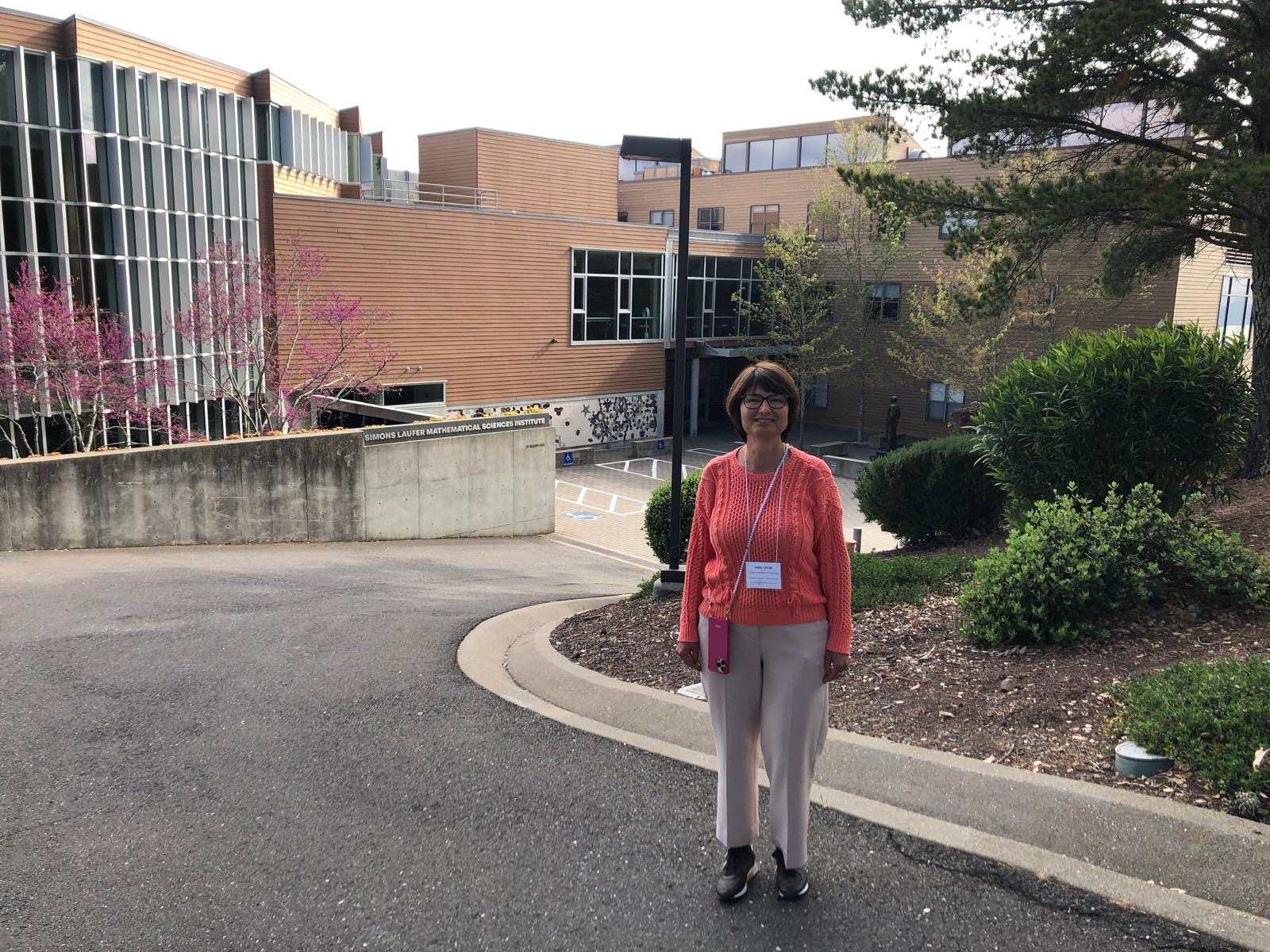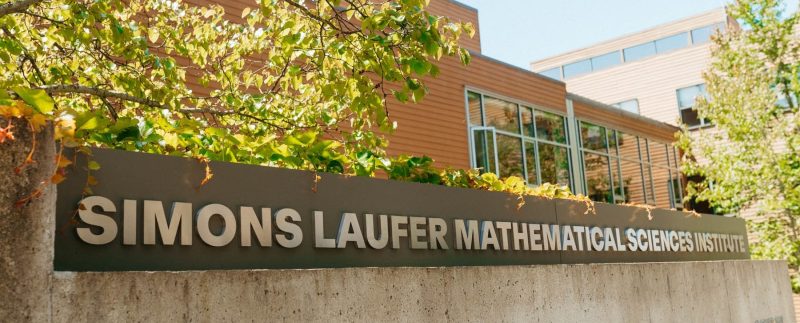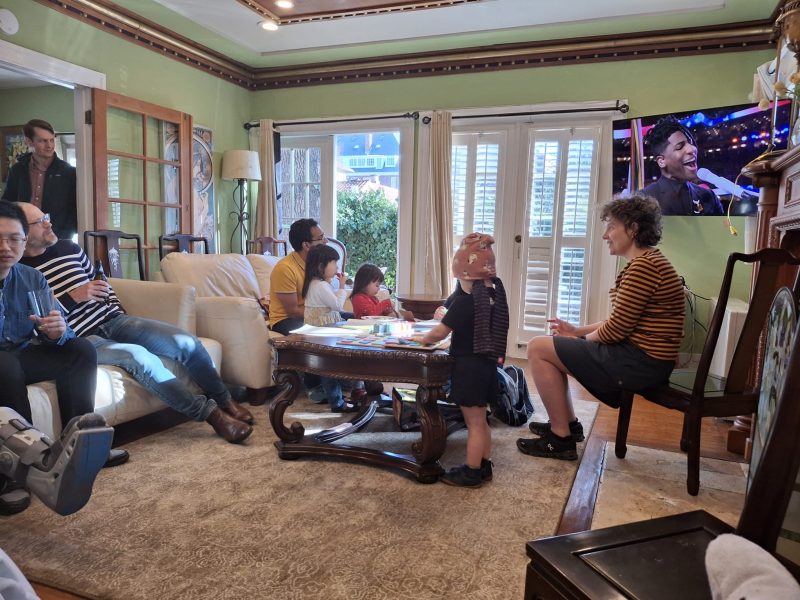Nelly Litvak is a participant of the Probability and Statistics of Discrete Structures (PSDS) program at the Simons-Laufer Mathematical Science Institute (SLMath), Spring 2025. This blog is part 3 in a trilogy of blogs.
‘So, what have you been doing 4 months in Berkeley?’
Accidentally, I bumped into an old friend on the last evening before my flight home, and this was her first question. I answered in a heartbeat:
‘I’ve been to a mathematics paradise.’
She laughed, but from her next question I realized she knew I was serious:
‘And what is a mathematics paradise?’
Metaphors aside, I wanted to give a clear crisp answer. This is not easy because there are so many things that make SLMath at Berkeley a dream place for doing mathematics. I ended up naming three that I will now share with you.
First of all, many experts in the same field come to stay at SLMath for an entire semester with the sole goal to do math together. The united theme of the spring 2025 semester was graphs, mostly random graphs. My friend didn’t know what any of these meant, so I explained: `A graph consists of dots and lines between them. It is a mathematical model for many things, for example, for a social network, where the dots are people and the lines are friendships. In a random graph the lines are random: they can be there or not with some probability.’
Being together in one place creates enormous synergy. Name your favourite paper, the author is just down the corridor. Don’t get how the proof goes? You only need to ask. And everyone will have time to explain and work together because this is what we are here for. In my normal work life I rarely have an opportunity to do math all day, and I enjoyed every minute of it.
The workshop and the seminars, too, were invitations to think along. Speakers took time to explain the context and the proof techniques. I was making notes as if I was a student again, came home with three full notebooks. During the workshop, there were only 4 talks per day and plenty of time for discussion.
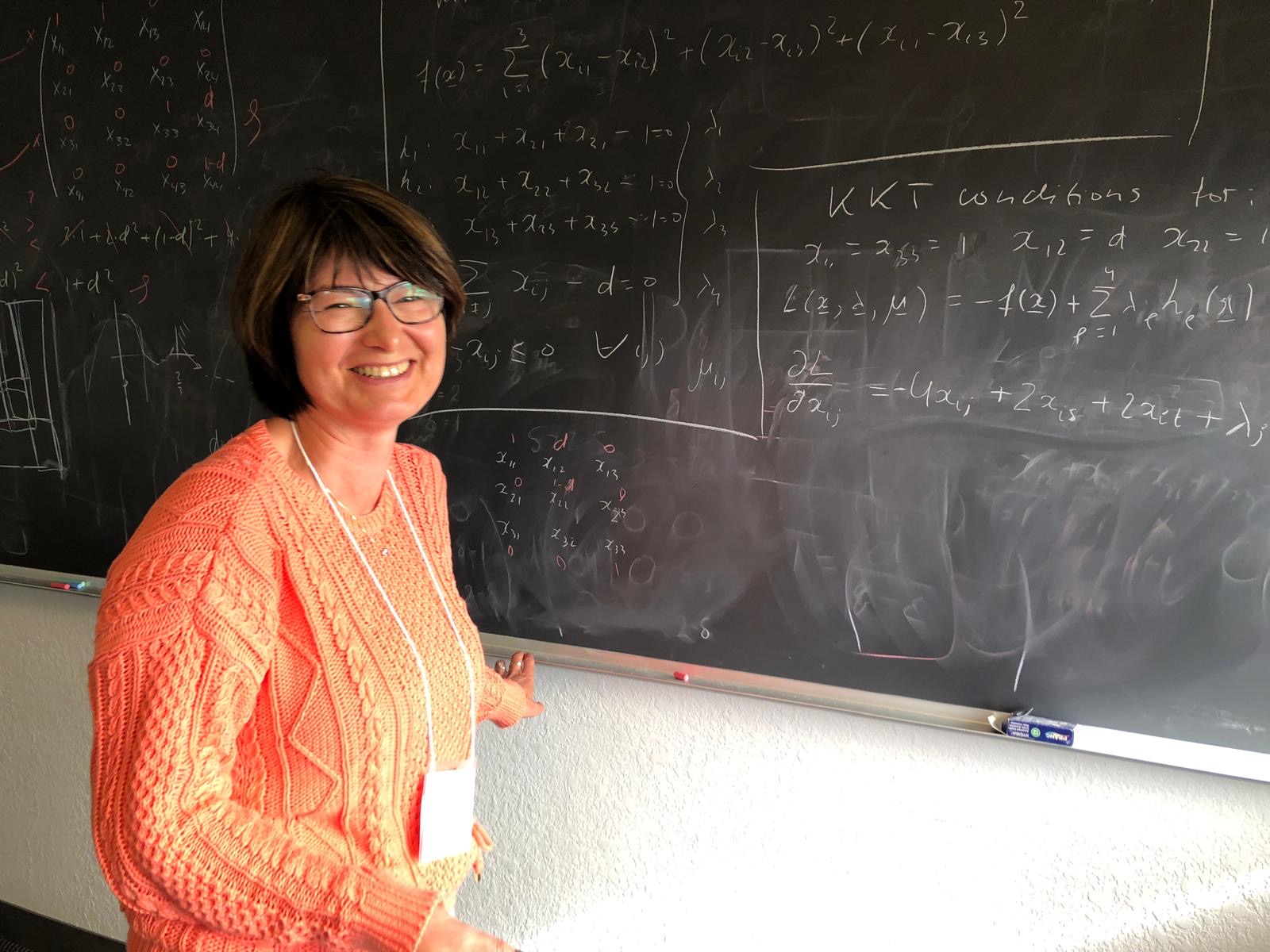
Photo: Stacie Ballard
When you discuss every day, the progress goes fast! For example, at the first workshop I learned about a new notion for me: the overlap gap property. Here is a simple example. Suppose you go somewhere, and there are two completely different routes, A (40 minutes) and B (50 minutes). Now, suppose you have arrived within an hour. This means that you either took some small variation of route A or some small variation of route B. The overlap are the slight variations of route A or route B that still bring you to the destination within an hour. And the gap is the big difference between routes A and B. We studied the overlap gap property for the problem of finding communities in networks. Turns out, there are community assignments like route B: they are not the best, but cannot be improved by making small changes. Fiona Skerman is an expert in community detection; she led this project and several people contributed to it. I love this project because it is so varied: from connecting deep concepts to writing and rewriting long expressions on a blackboard.
Most of the time at each blackboard somebody was writing and discussing mathematics. Even at the last tea break, 30 minutes before the final check-out time!
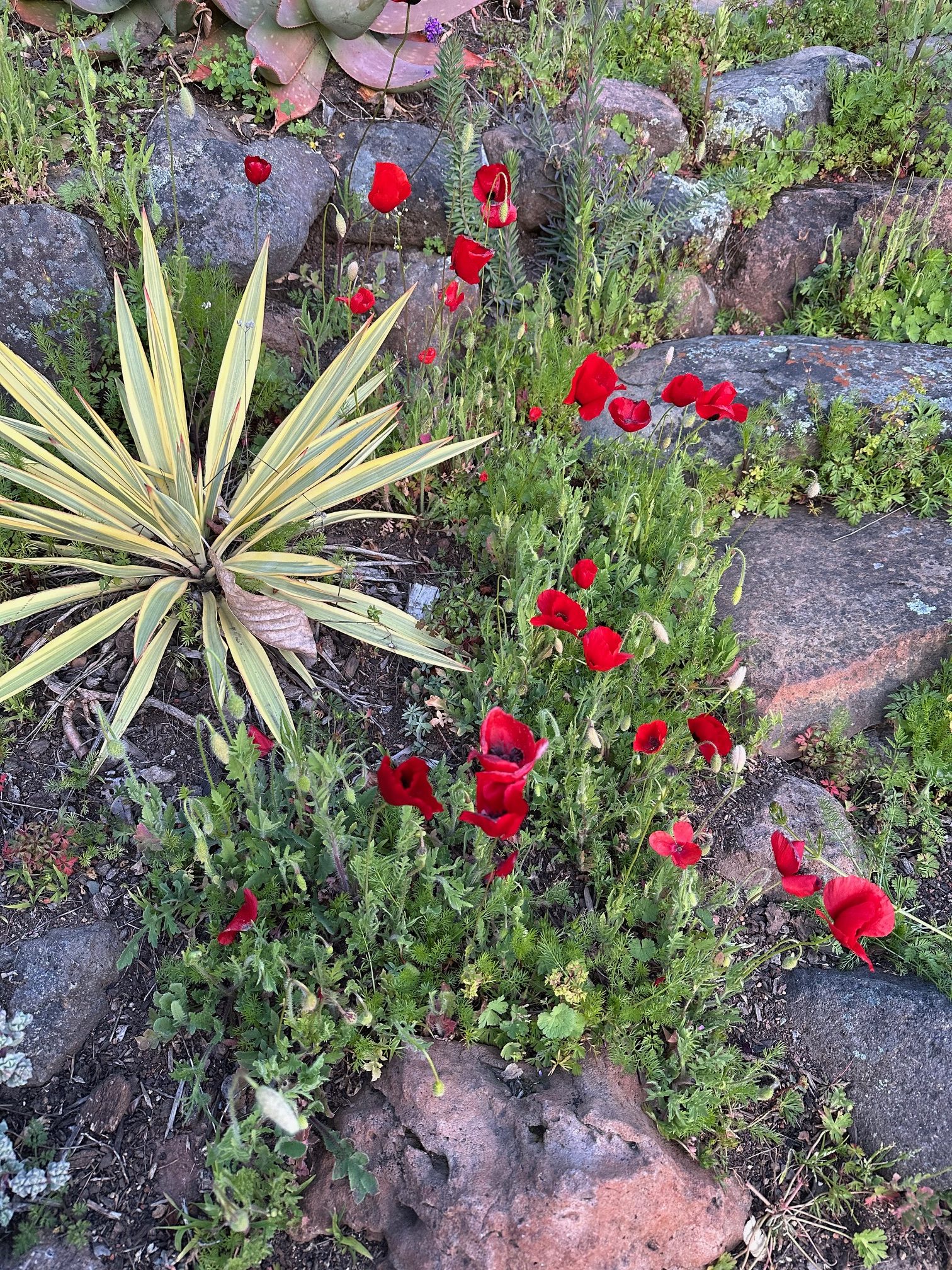
Flowers on a street
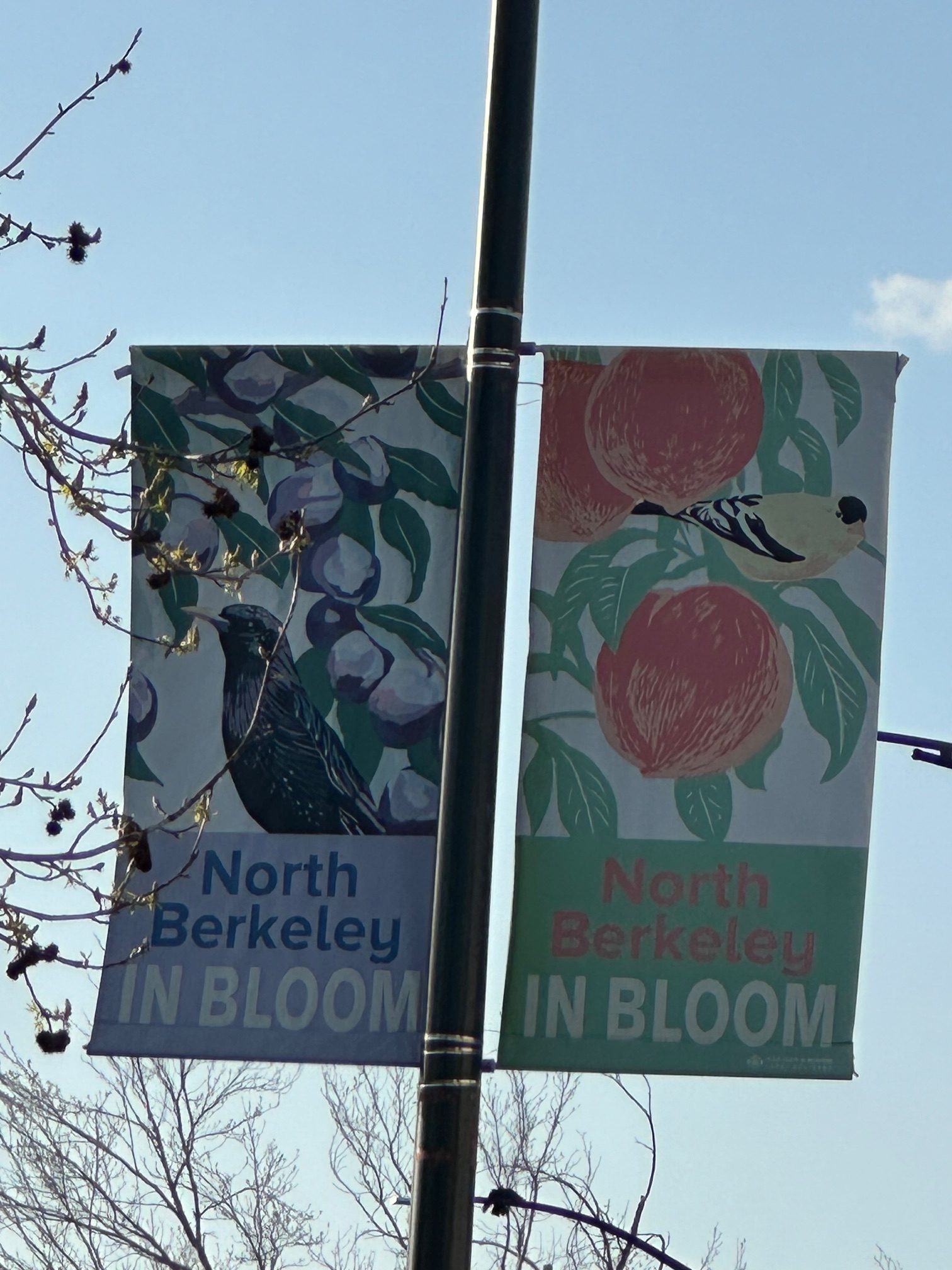
Banners in Berkeley in spring
And this brings me to the second point. The place itself is absolutely fantastic. The SLMath building is spacious and full of light, with large blackboards in every office and on every wall. Wipe it before you leave, and next morning it will be perfectly clean and ready for more math. The institute is beautifully located up in Berkeley hills, overlooking the Bay and the Golden Gate Bridge, with two large terraces, and a beautiful library with probably every math book ever written. The SLMath staff is extremely welcoming and friendly; they take care of everything from administration to tea snacks, so that we could just focus on our proofs. Add to this the beautiful spring with blooming flowers of every colour in Berkeley and all over the hills. It was hard to imagine a more inspiring environment for doing mathematics.
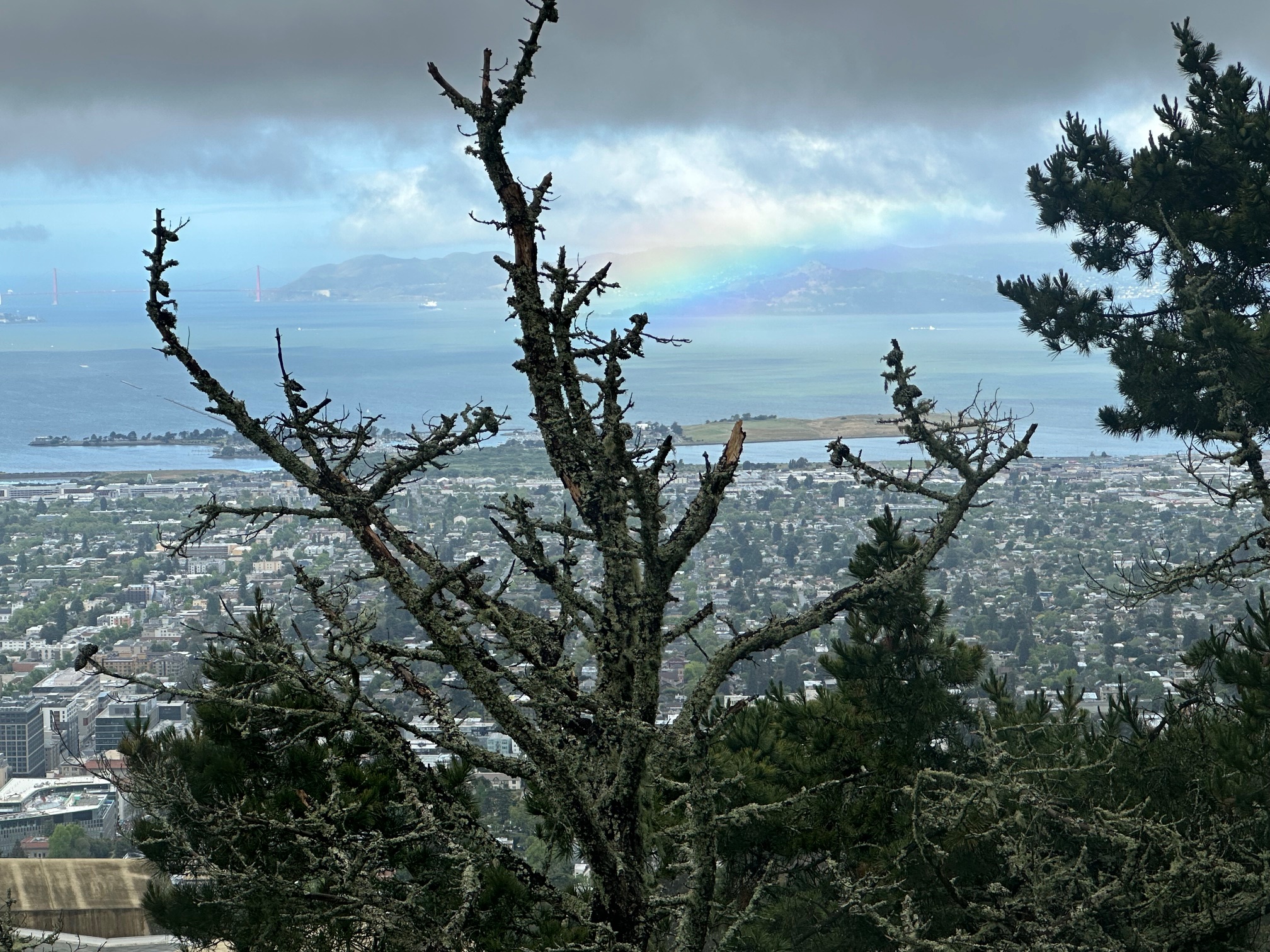
The view from Nelly's office window to a rainbow over the Bay (Golden Gate bridge on the left)
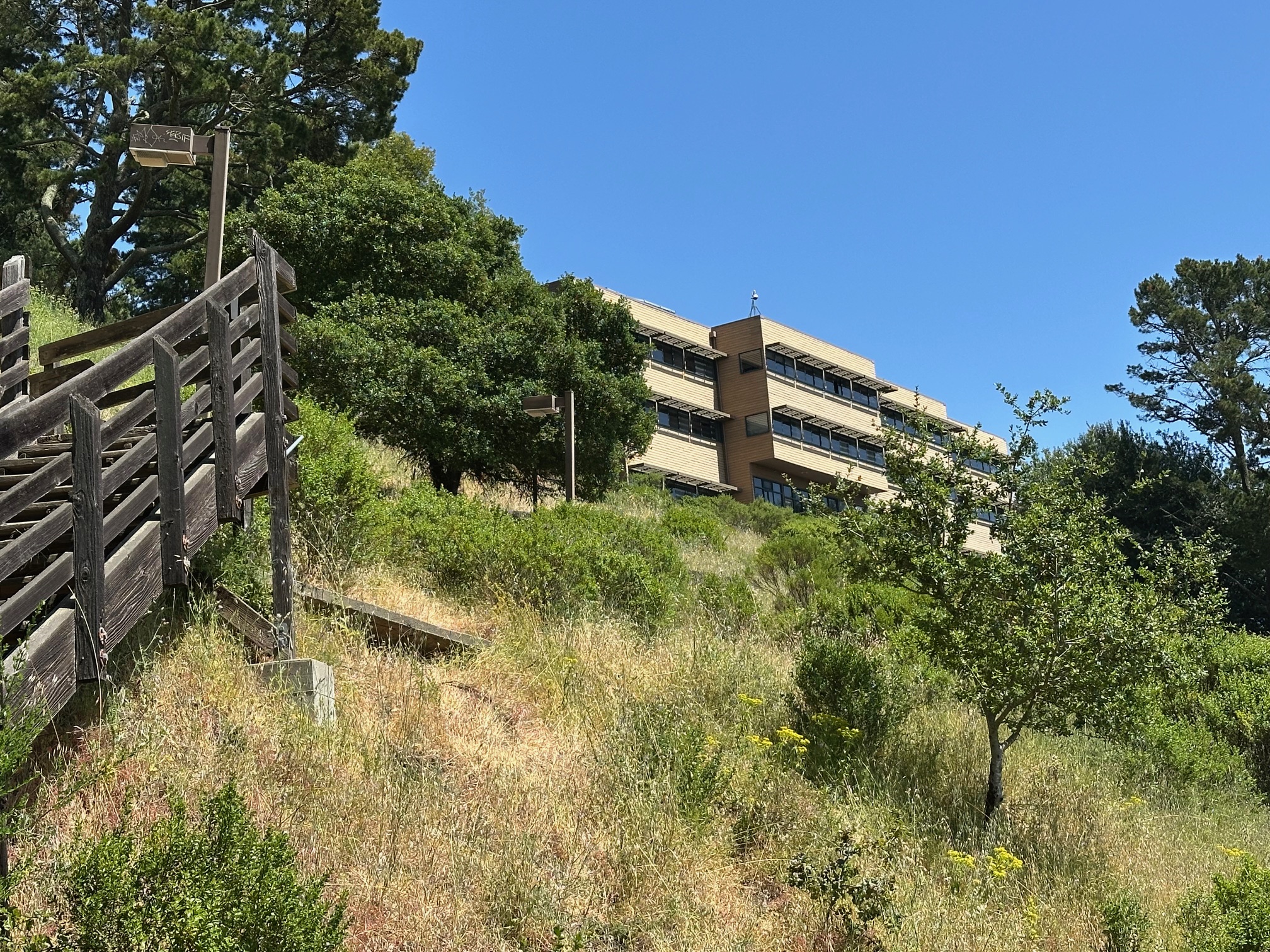
Last view to SLMath on Nelly's way back home on the last day
Last but not least, my third point is that half of the participants were postdocs, young researchers. It is stunning how knowledgeable and skilled young researchers are nowadays. I loved to talk to them, about math and any other topic. I was honored when Joost Jorritsma asked my advice on the professional development program. The postdocs made a lot of progress in their math projects, organized informal open problem and progress sessions, and brightened our time with a firework of social activities. For me, the highlights were the one-woman theater play `Uniform Convergence’ written and performed by Corrine Yap (a recording is available!), and the talent/untalent show at the end of the program.
These young people are the future of our field, and I know this future is in good hands. I hope some twenty years from now they will organize a program like this, with an entirely new set of open problems, but with the same idea: to do math together and to build a strong network with a new generation. And I hope they can do it at SLMath, the mathematician’s dream place.
Cover photo by Stacie Ballard

